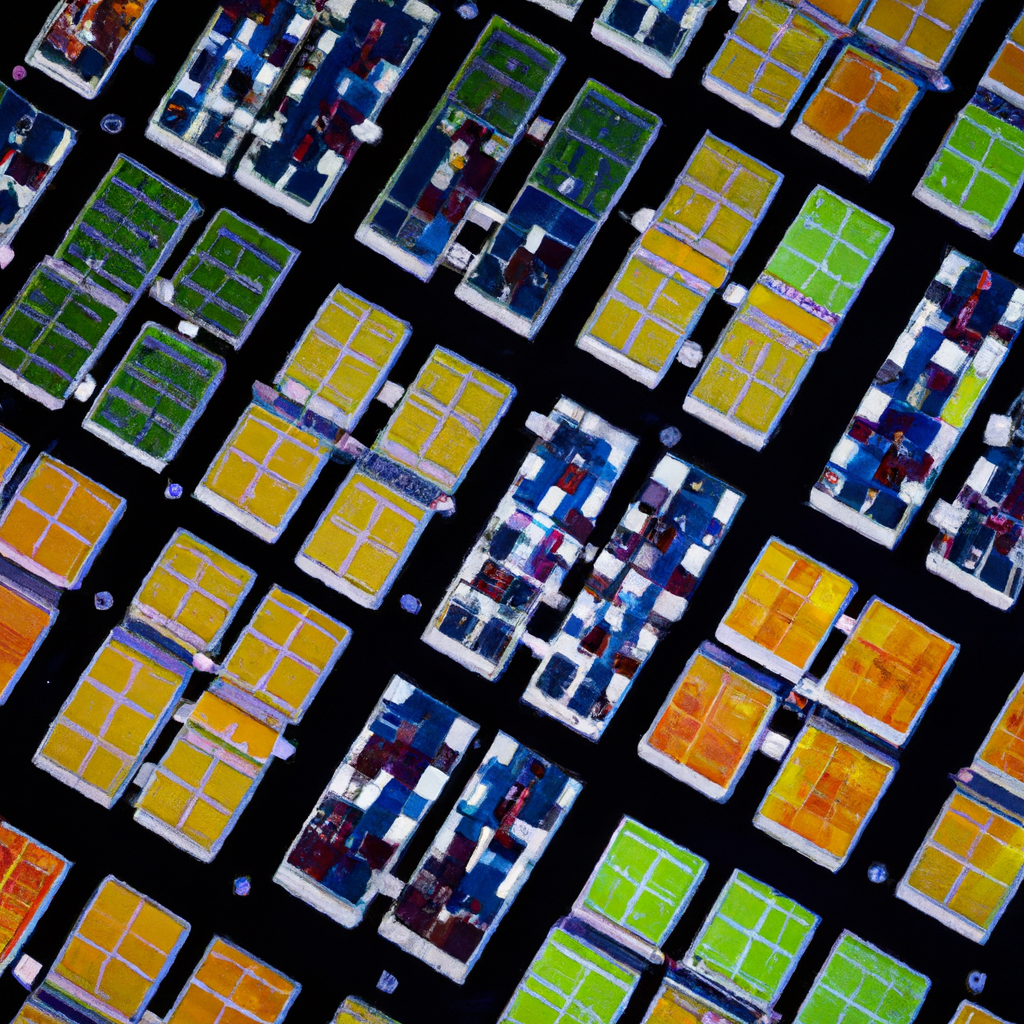In recent years, the demand for clean and sustainable energy sources has grown exponentially. As traditional power grids struggle to keep up with the increasing energy demands, a new solution has emerged: microgrids. These small-scale renewable energy systems are revolutionizing power distribution by providing numerous benefits to both communities and individuals. In this article, we will explore the surprising benefits of microgrids and how they are transforming the way we think about energy.

What are Microgrids?
Before delving into the benefits, let’s first understand what microgrids are. Simply put, microgrids are localized energy systems that can operate independently or in conjunction with the main power grid. They consist of small-scale power generation sources such as solar panels, wind turbines, or even biomass generators. Microgrids can provide electricity to a single building, a neighborhood, or even an entire town. By leveraging renewable energy sources, microgrids offer a cleaner and more sustainable alternative to traditional power grids.
Benefits of Microgrids
1. Enhanced Energy Resilience
One of the most significant benefits of microgrids is their ability to enhance energy resilience. Unlike traditional grids that are susceptible to blackouts caused by natural disasters or equipment failures, microgrids can continue to operate independently. This means that even during power outages, communities or buildings connected to microgrids can still have access to electricity. This increased resilience ensures that critical facilities like hospitals, emergency centers, and communication networks can function uninterrupted during times of crisis.
2. Energy Cost Savings
Microgrids also provide substantial energy cost savings over the long run. By generating electricity from renewable sources locally, microgrids reduce the reliance on expensive fossil fuels and the associated transmission costs. Additionally, the ability to sell excess energy generated by microgrids back to the main grid can generate revenue for microgrid owners. This, in turn, lowers the overall energy costs for consumers connected to the microgrid.
3. Environmental Sustainability
With the growing concerns about climate change and the need to reduce greenhouse gas emissions, microgrids offer an environmentally sustainable solution. By utilizing renewable energy sources like solar and wind power, microgrids significantly reduce carbon footprints compared to traditional grids. This shift toward cleaner energy not only helps combat climate change but also improves the overall air quality in the communities where microgrids are implemented.
4. Grid Independence
Microgrids provide the advantage of grid independence, allowing communities or buildings to operate autonomously from the main power grid. This means that even in remote or isolated areas, where extending the main grid may not be feasible or cost-effective, microgrids can provide a reliable and sustainable energy source. Grid independence also offers communities the flexibility to tailor their energy systems to their specific needs, further enhancing their resilience and energy security.
5. Job Creation and Economic Growth
The adoption of microgrids promotes job creation and economic growth. As the demand for renewable energy systems increases, so does the need for skilled professionals in the industry. The installation, operation, and maintenance of microgrids require expertise in various fields, including engineering, construction, and renewable energy technologies. This, in turn, stimulates local economies by creating job opportunities and attracting investments in renewable energy infrastructure.
6. Improved Energy Efficiency
Microgrids are designed to optimize energy efficiency, leading to reduced energy wastage. Unlike traditional grids, which transport electricity over long distances, microgrids generate and distribute energy locally. This localized approach minimizes transmission losses and voltage drops, resulting in a more efficient energy delivery system. By maximizing energy efficiency, microgrids help conserve valuable resources and reduce energy-related costs.
7. Emergency Preparedness
In times of natural disasters or emergencies, microgrids play a critical role in emergency preparedness. With their ability to operate independently, microgrids can provide essential power to emergency response centers, shelters, and critical infrastructure when the main grid is compromised. This ensures that vital services and communication networks remain operational during challenging times, aiding in disaster recovery efforts.
Conclusion
Microgrids are transforming power distribution by offering numerous benefits that traditional grids struggle to provide. From enhanced energy resilience and cost savings to environmental sustainability and job creation, microgrids are revolutionizing the way we think about energy. As the world continues to prioritize clean and sustainable energy solutions, the adoption of microgrids will undoubtedly play a crucial role in building a greener and more resilient future. Embracing microgrids is not only a smart choice for communities but also a significant step in mitigating the impact of climate change and securing a reliable energy supply for generations to come.